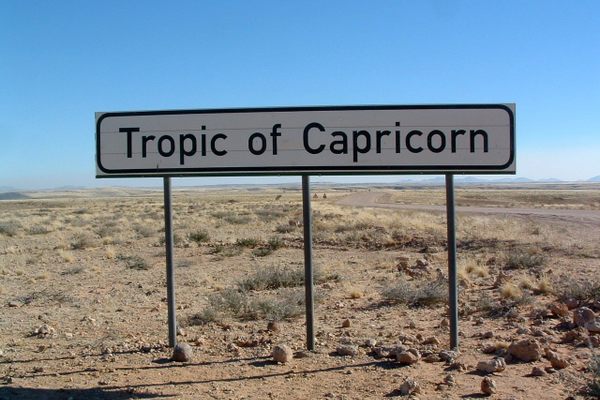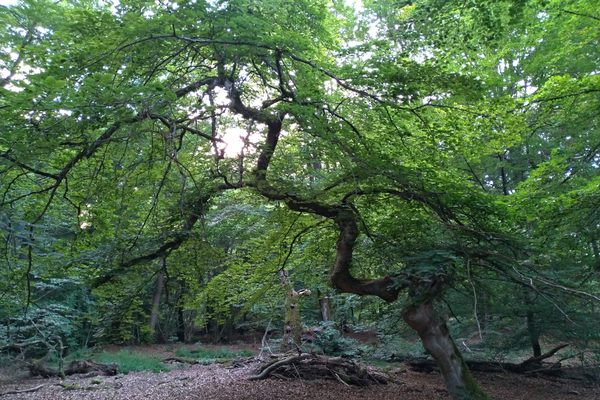Stretching through Angola and Namibia on the southwest coast of Africa, the Namib Desert gets less than a half inch of rain per year. It’s a completely barren landscape, deathly hot and mostly devoid of life, save a little flora and fauna including a bizarre plant that can live for centuries in the arid Namib.
Known as the tweeblaarkanniedood (“two-leaf-cannot-die”) in Afrikaans, the easier-pronounced word for the plant is Welwitschia, named for the Austrian scientist who studied it in the mid-19th century. Although it almost looks dead, piled in a heap on the desert sand, Welwitschia is a powerfully-evolved survivor. Able to intake moisture from fog over the Namib, it can live for hundreds of years, and some of the oldest known Welwitschia are 2000 years old. What one sees above ground is only the tip of the iceberg so to speak, is actually a bizarre tree with a large, mostly underground taproot-like trunk with corky bark and high water storage capacity. The plant has only two strap-like leathery leaves, growing constantly from the same spot for the entirety of the plant’s life. These leaves split apart into smaller straps as they grow, giving the illusion of many leaves.
Apparently related to the conifers, welwitschia are dioceous, meaning that they grow as separate male and female plants. Welwitschias belong to a small order of gymnosperms (cone-bearers, Latin for “naked seed”) called gnetophytes. This order is comprised of three families Welwitschiaceae, Ephedraceae (the ephedra family), and Gnetaceae (the Gnetum family), and each of these families only have one genus, for which they are named. The gnetophyte order is believed by many botanists to be a genetic and morphological (with special focus on the growth and form of their microsporangia in the pollen structures) missing link between the cone-bearers and the true flowering plants (the angiosperms), and it is possible that members of this order were the very first plants to be insect-pollinated.
Considered by many to be a living fossil, the strange plants are coveted, and as such are growing endangered. They are protected only by their position deep in the Namib desert, which is difficult to traverse. There is some effort by botanic gardens specializing in desert flora to propagate the welwitschia and get rid of its endangered status.


















Follow us on Twitter to get the latest on the world's hidden wonders.
Like us on Facebook to get the latest on the world's hidden wonders.
Follow us on Twitter Like us on Facebook